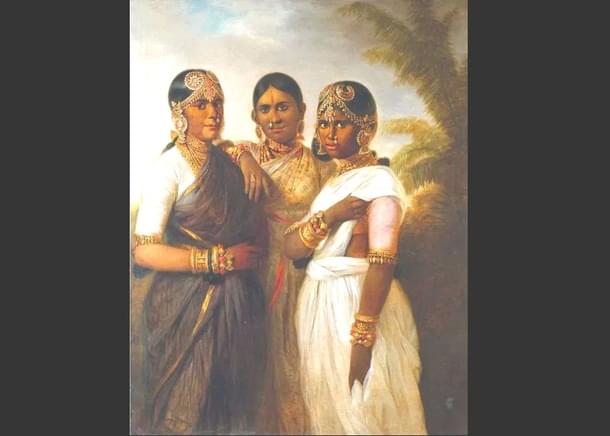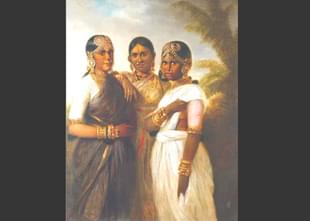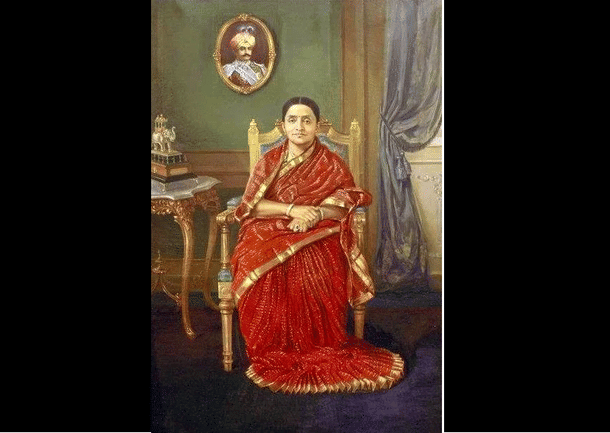Culture
How the Mysuru Queens Combated Pandemics
Adithi Gurkar
Oct 26, 2020, 01:34 PM | Updated 01:34 PM IST
Save & read from anywhere!
Bookmark stories for easy access on any device or the Swarajya app.


The royal family of Mysuru has always been revered by its subjects. The respect is not simply a consequence of their blue blood, it stems primarily from gratitude. The people of Karnataka have much to thank this family for.
The scions, regents and trusted Diwans of the Wadiyar dynasty have over successive reigns established educational institutions, dams, hydroelectric power stations, steel plants, hospitals, banks and research centres to provide for the progress of their people. These institutions continue to contribute to the prosperity of the state.
The Wadiyars were egalitarian monarchs. Mysuru, in 1923 gained the distinction of being the first state in India to enfranchise women. Royal women also possessed a great deal of agency. Right from Maharani Lakshmammanni who restored sovereignty to the Wadiyars after it was usurped by Tipu, to Maharani Kempananjammani of the Vani Vilasa Sannidhana who reigned as Queen Regent, the Ranis have been at the forefront of both social and political change.
The Power of Persuasion
Mysuru Queens have also played impactful roles in combating pandemics. Similar to the coronavirus pandemic of today the kingdom of Mysuru had to battle smallpox in the 19th century. Smallpox could be treated through inoculation. The vaccine was the first ever to be developed. However, when it came to its administration, people were hesitant, they found the concept of voluntary infection at odds with their notions of purity.
Met with suspicion and resistance, the British approached the Wadiyars for help. The idea of royalty consenting to inoculation was a powerful one. Powerful enough to convince their subjects to partake in vaccination drives. This idea led to Mysuru Maharanis becoming the faces of the world’s first immunisation campaign.
The above portrait was painted by the Irish-born painter Thomas Hickey, a commissioned painter of the British East India Company. It was last offered for sale at Sotheby’s in 2007. Not much was known about the subjects of this arresting rendition until Dr Nigel Chancellor, a historian at Cambridge University identified the lady on the extreme right to be Maharani Devajamanni of Lakshmi Vilasa Sannidhana, she was the junior Queen of Mummadi Krishnaraja Wadiyar (Krishnaraja Wadiyar III).
In the portrait, she holds her pallu (the decorated end of the saree that hangs lose when worn) to expose her left arm indicating her willingness to be vaccinated. The lady on the right was identified as Pattamahisi Devajamanni the senior-most Queen of Mummadi Krishnaraja Wadiyar.
The discolouration under her nose and around her mouth is consistent with controlled exposure to the smallpox virus. The woman in the centre of the portrait, to whom Dr Nigel credits this policy to, was the King’s adoptive grandmother - Maharani Lakshmiammani Devi, whose husband King Krishnaraja Wadiyar II had succumbed to smallpox.
Through this painting, vaccination gained the Wodeyar stamp of approval. For the royals, it was a salutary gesture meant to assuage the fears of the general public. Court records of 1806 announce that Maharani Devajammani’s endorsement of the vaccine influenced more people to get vaccinated.
Portraits of royal women in strikingly casual poses were rare phenomena. This painting of the Maharanis is testament to the Wadiyar vision, which is hallmarked for being ahead of its time.

The Queen Regent
After smallpox, the Kingdom of Mysuru battled the Bubonic plague. The outbreak that began in 1898 lasted for nearly 3 years. It occurred during the reign of Queen Regent Maharani Kempananjammanni of Vani Vilas Sannidhana.
The Dowager Queen had taken over the administration of Mysuru after the untimely death of her husband Maharaja Chamarajendra Wadiyar X, on behalf of her minor son and the future Maharaja - Nalwadi Krishnaraja Wadiyar (Krishnaraja Wadiyar IV)
The Maharani was known for her proactive measures. When she realised the potential crisis the plague could cause, she decongested the palace fort. She then tripled the spending on healthcare and established numerous hospitals. The prominent among them being Bengaluru’s Victoria hospital.
When her subjects refused to depart their homes to contain the spread of the disease she stood by her officers and urged for cooperation. Her majesty also recognised the housing needs that thus arose and constructed new localities in the cities of Mysuru and Bengaluru to rehabilitate people. Malleshwaram and Basavangudi of Bengaluru are a result of such an initiative.
Maharani Kempananjammanni of Vani Vilas Sannidhana was a benevolent administrator. During her rule, she ensured drinking water supply for Mysuru, built Hydro-electric power stations, the Vani Vilasa Sagara Dam and established a Geological Research Department. Under her, cities grew and prospered as urban planning and development took shape.
A champion of women’s rights she implemented several post-natal programs for women and children and established The Vani Vilas Club for women [both European and Indian]. In present-day Karnataka, there are several public institutions and hospitals that are prefixed with “Vani Vilas” as a tribute to Her Majesty. Vani Vilasapura dam, Vani Vilasa Road, Vani Vilas circle, Vani Vilasa bridge, Vani Vilas College are just some examples of the Maharani’s legacy.
The Queens of Mysuru lead lives that were conservative and custom-bound. However, when faced with unique challenges they acted with competence and conscientiousness. Their actions correspond to the great tradition of benevolence, a distinction of the Mysuru royal family.





